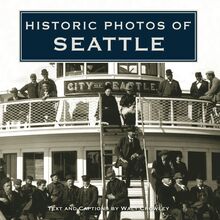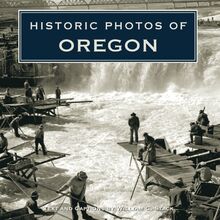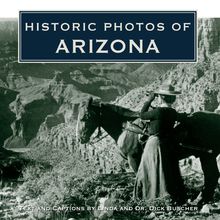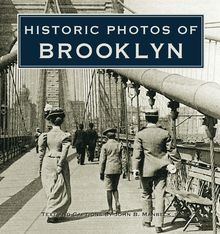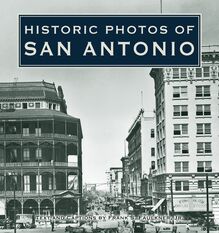Historic Photos of Oakland , livre ebook
201
pages
English
Ebooks
2009
Vous pourrez modifier la taille du texte de cet ouvrage
Obtenez un accès à la bibliothèque pour le consulter en ligne En savoir plus
Découvre YouScribe et accède à tout notre catalogue !
Découvre YouScribe et accède à tout notre catalogue !
201
pages
English
Ebooks
2009
Vous pourrez modifier la taille du texte de cet ouvrage
Obtenez un accès à la bibliothèque pour le consulter en ligne En savoir plus
Publié par
Date de parution
01 juillet 2009
Nombre de lectures
1
EAN13
9781618584168
Langue
English
Poids de l'ouvrage
9 Mo
Its place directly opposite San Francisco Bay from one of the world’s most visited cities has left Oakland to struggle against comparison from the start. It has greeted that challenge by asserting its identity as an effervescent international port city with a richly diverse, uniquely creative, and highly resilient population.
Oakland consistently finds itself at the forefront of the rapid pace of change that California has helped to drive, with its history of daring experiments in social, scientific, and cultural innovation.
The camera has preserved glimpses into the impacts of that change—and the ways in which Oakland has adapted to sustain itself as a charming and welcoming gateway to the Pacific. Historic Photos of Oakland collects a small fraction of the record the cameras have left behind, providing a compelling view of the colorful past of the "second” City by the Bay.
Publié par
Date de parution
01 juillet 2009
EAN13
9781618584168
Langue
English
Poids de l'ouvrage
9 Mo
HISTORIC PHOTOS OF
OAKLAND
T EXT AND C APTIONS BY S TEVEN L AVOIE
Photographer Carleton Watkins produced this photograph of the nursery of Wright F. Kelsey situated where Telegraph Avenue and 23rd Street now intersect. The image, with its display of the bounty of Kelsey s land, was published widely alongside articles promoting California s rich agricultural potential.
HISTORIC PHOTOS OF
OAKLAND
Turner Publishing Company
200 4th Avenue North Suite 950
Nashville, Tennessee 37219
(615) 255-2665
www.turnerpublishing.com
Historic Photos of Oakland
Copyright 2009 Turner Publishing Company
All rights reserved.
This book or any part thereof may not be reproduced or transmitted in any form or by any means, electronic or mechanical, including photocopying, recording, or by any information storage and retrieval system, without permission in writing from the publisher.
Library of Congress Control Number: 2009921191
ISBN-13: 978-1-59652-529-0
Printed in China
09 10 11 12 13 14 15 16-0 9 8 7 6 5 4 3 2 1
C ONTENTS
A CKNOWLEDGMENTS
P REFACE
V ISIONS OF A G REAT M ETROPOLIS (1850 S -1899)
A THENS OF THE W EST (1900-1928)
T HE S ECOND G OLD R USH (1929-1945)
O UT OF THE S HADOWS (1946-1970)
N OTES ON THE P HOTOGRAPHS
The western terminus of the Transcontinental Railroad, shown here in the 1890s, transformed Oakland from a sleepy cattle town to an international center of commerce and industry.
A CKNOWLEDGMENTS
This volume, Historic Photos of Oakland , is the result of the cooperation and efforts of many individuals and organizations. It is with great thanks that we acknowledge the valuable contribution of the Oakland History Room at the Oakland Public Library and the Library of Congress for their generous support.
-------
Sincere gratitude for the work and vision of my predecessors and colleagues at the Oakland Public Library, especially the past and present staff in the Oakland History Room, and to Tony Molatore of Berkeley Gicl e.
- Steven Lavoie
-------
This project represents countless hours of review and research. The researchers and writer have reviewed many hundreds of photographs in numerous archives. We greatly appreciate the generous assistance of the individuals and organizations listed here, without whom this project could not have been completed.
The goal in publishing this work is to provide broader access to this set of extraordinary photographs, as well as to inspire, provide perspective, and evoke insight that might assist citizens as they work to plan the city s future. In addition, the book seeks to preserve the past with adequate respect and reverence.
With the exception of touching up imperfections that have accrued with the passage of time and cropping where necessary, no changes have been made. The focus and clarity of many images is limited by the technology and the ability of the photographer at the time they were taken.
P REFACE
Although it sits at dead center of one of the nation s major metropolitan areas, visible to tens of thousands of travelers moving by car, by sea, by rail, and by air, Oakland remains seldom seen by outsiders. Even its own photographers, some of the most proficient and prolific in the field, have been unable to make scenes of Oakland instantly recognizable such as those of other great cities of the world.
From its hills, cameras capture spectacular views of one of the world s most scenic urban landscapes, with views across the San Francisco Bay and out through the Golden Gate to the Pacific Ocean. On its streets, the world s broad range of human form-and economic circumstance-reveals itself daily. A city plan of great ambition, instituted well ahead of other cities, provided Oakland with a coherent and aesthetic urban core, with busy, colorful, and attractive neighborhood commercial districts and a downtown center rich with architectural treasures.
Along with its shimmering light and consistent sunshine, Oakland would appear to be a prime source of postcard views to attract the attention of photographers. It has certainly provided photojournalists and documentary photographers an abundance of material, situated at the vanguard of nearly every boom and bust, fad, trend, and social phenomenon to emerge on the West Coast, while history carried on in the events of the day. Watershed moments in aviation, in sports, in commerce, in the literary and visual arts, in women s rights, and civil rights were taking place in Oakland, obscured too often by the long shadow cast by the high-profile city across the bay.
Novice photographers, too, had familiar surroundings and interesting if commonplace lives to document with their Kodak Brownies, Instamatics, and Polaroid Swingers. A camera in the hands of an amateur or hobbyist provides a much different angle on the passage of time than it might in the hands of artists and professionals.
The work of women is unequivocally strong in Oakland s photographic heritage. At the turn of the twentieth century, Anne Brigman emerged as a leading member of the Pictorialist photographers from her backyard studio in Oakland that would serve the next generation as a gathering spot for the modernists of Group f/64, best known for the work of Ansel Adams.
Brigman was followed by Imogen Cunningham and Dorothea Lange, who represented far different approaches to their subjects, with Oakland a popular setting for their work. The work of both Brigman and Lange is represented here with images that serve to document important moments of the city s history.
The great earthquake of 1906 provided the opportunity for Oaklanders Doc Rogers and Charles Estey to establish their lasting reputations as photographers. Rogers, who enjoyed a long career with the Oakland Tribune , was particularly stubborn about adopting new technology and continued the use of glass negatives until supplies ran out during World War II.
A prolific Jewish photographer, Moses Cohen, left a particularly valuable visual record of his city s development during a long career that lasted most of the twentieth century. He took pictures for publicity campaigns launched by merchants, car dealers, movie theaters, real estate brokers, city agencies, corporate offices, and promoters of fairs, festivals, parades, sports contests, and other special events. He took jobs at weddings and photographed municipal projects. Albert Kayo Harris carried on that tradition, along with numerous others who covered the news and recorded the activities of Oakland s public agencies, its schools, Chamber of Commerce, and its military commands.
Numerous factors went into the selection of the images included here, causing much to be left out and much that may not seem as significant to be included. Every photograph is part of the collection of a public library or a public museum. If there is intrinsic social benefit in a common understanding of the past, the images reproduced here will attest to the value of those collections and to the institutions we have established to sustain them.
- Steven Lavoie
Love lured the great Scottish novelist Robert Louis Stevenson to Oakland, in pursuit of his sweetheart, Fanny Vandegrift Osbourne, whom he met on a visit to the artists colony at Barbizon, France. The couple married and had settled in Oakland in 1869 to raise children where they encountered Samuel Merritt. A photographer captured an image of the Stevensons with others aboard Merritt s yacht The Casco in the Oakland harbor. Merritt stands behind his guests in the bowler hat.
V ISIONS OF A G REAT M ETROPOLIS
(1850 S -1899)
Sparsely populated California was a virtual terra incognito when it suddenly caught the world s attention in the late 1840s with a report of rich deposits of gold in the hills. The story grabbed newspaper headlines around the world. The ensuing rush of fortune hunters to the west coast of North America ensured an end to the pastoral existence of the first colonists, a few thousand subjects of the Spanish throne who came up the coast to settle the remote northern frontiers of Mexico, along with that of the surviving indigenous North Americans who had once roamed the land far and wide.
While the gold claims in the mountains and the foothills were up for grabs, the property rights for the pastures, farmlands, woods, and home sites along the Pacific coast were, for the most part, very much established under the treaty that turned California over to the United States in 1848. That small detail had little impact on the newcomers, many of whom found a career in mining far too rigorous, or whose luck in prospecting just went bust. Others saw a rich future in other fortunes California could provide in more refined forms of commerce, such as real estate, agriculture, or retail trade. Towns and cities resulted, among them San Francisco, nearest the Pacific Ocean, and across the bay to the east, Oakland.
By 1869, Oakland had been chosen as the western terminus of the Transcontinental Railroad and was a convenient haven from the lawless city opposite the bay for families wishing to put down roots amid a bounty of educational opportunities and other amenities. A romance lured Scottish novelist Robert Louis Stevenson to help carry on the city s literary legacy, begun by author Bret Harte before him. Oakland s scenic beauty attracted artists, too, including painters Thomas Hill, William Keith, and others, who would inspire a uniquely Californian visual style. The great naturalist John Muir endured urban life in Oakland to complete some of his most enduring literary work.
Rapid growth came with the railroad as great wealth continued its flow out of the Sierra Nevada. Lake Merritt, created with a dam built across a slough, served as a scenic place of residence for the newly well-heeled of the West Coast. For average people, the city s lake, its waterfront, and its pastoral landscape provided a convenient Sunday getaway from city life-and the wide open spaces offered unprecedented opp



